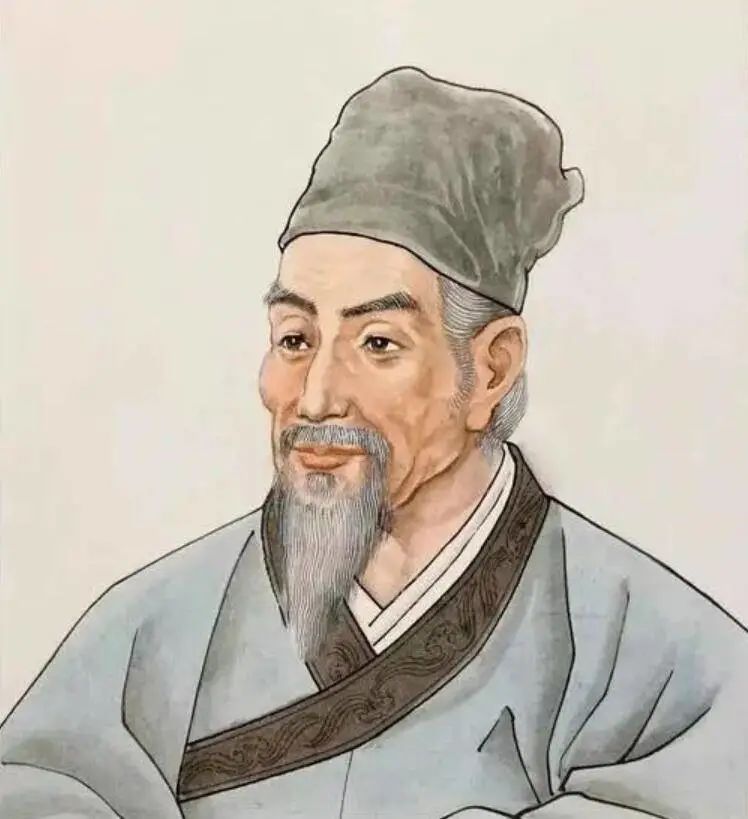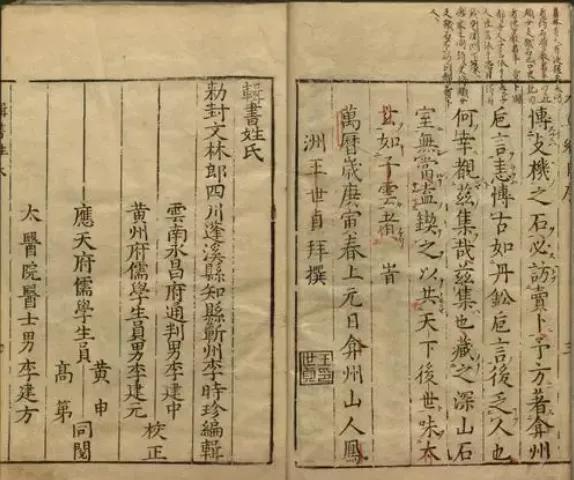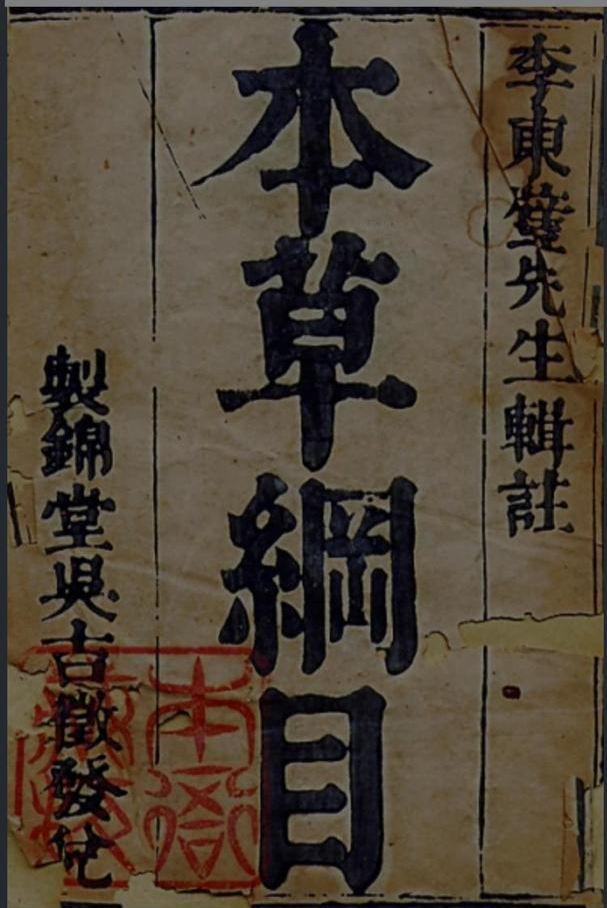
The Ben Cao Gang Mu (Compendium of Materia Medica) is the most significant achievement of the renowned Ming dynasty physician and pharmacologist Li Shizhen. It is a monumental work that encapsulates his lifelong learning and is a comprehensive compilation of earlier materia medica texts. Its influence has lasted for over 400 years, holding an important position not only in China but also in the international academic community, with Darwin referring to it as the “Encyclopedia of China.” Li Shizhen is revered in the field of Traditional Chinese Medicine (TCM) alongside other greats like Zhang Zhongjing and Sun Simiao, and is honored as the “Sage of Medicine” by later generations.
It is universally acknowledged that the Ben Cao Gang Mu is authored by Li Shizhen. However, there has been ongoing debate regarding the location where it was completed. To address this, the authors have verified and organized numerous historical records related to the Ben Cao Gang Mu and have preliminarily concluded that it was completed in Pengxi County, Sichuan.

Portrait of Li Shizhen
Early Edition of the ‘Ben Cao Gang Mu’ – ‘One Mother, Three Systems’
The early editions of the Ben Cao Gang Mu in the Ming dynasty are referred to as “One Mother, Three Systems”: “One Mother” refers to the earliest version of the Ben Cao Gang Mu—the Nanjing edition printed by Hu Chenglong in the 21st year of the Wanli era (1593), known as the rare edition; “Three Systems” refers to the official Jiangxi edition, the Qian edition, and the Zhang edition printed in the 34th year of the Wanli era (1606).
There are eight surviving copies of the rare edition of the Ben Cao Gang Mu (three in Japan, one in the USA, one in Germany, and three in China, which are housed in the China Academy of Chinese Medical Sciences, Shanghai Library, and the private collection of Chao Huiyuan in the Luoyang Baihe Book Studio Museum).
According to the Jinling edition of the Ben Cao Gang Mu displayed by Chao Huiyuan in Qichun during the 500th anniversary of Li Shizhen’s birth in 2018, this edition is a reprint of the Jinling original, known as the “Zhi Jin Tang edition” (which has been recognized and included in the National Precious Ancient Books Directory in 2010, number 08384), printed between the late Wanli period and the early Tianqi period.
The “Zhi Jin Tang edition” of the Ben Cao Gang Mu is the only version among the surviving Jinling editions that has a printing date and publisher’s name. It includes the preface by Wang Shizhen, the list of surnames, the general index, the preface, the content of each volume, and two supplementary illustrations, with no other additional pages. The title page is inscribed with the four characters “Ben Cao Gang Mu” in Yan script, signed on the right by “Mr. Li Dongbi’s annotations” and on the left by “Zhi Jin Tang’s Wu Jizheng’s publication.” The upper volume of the supplementary illustrations is titled “Edited by Li Jianzhong, the county magistrate of Pengxi, and illustrated by Li Jianyuan, a student of the prefecture, and Li Shuzong, a student of the state,” while the lower volume is edited by Li Jianzhong, illustrated by Li Jianmu, and proofread by Li Shusheng.

Imperial Edict for the County Magistrate of Pengxi, Sichuan – Qizhou, Li Shizhen, Editor
Li Jianzhong, Li Jianyuan, and Li Jianmu are the sons of Li Shizhen, with Li Jianzhong being the eldest son and Li Jianyuan the second son; Li Shuzong and Li Shusheng are the grandsons of Li Shizhen.
Li Jianzhong Served as County Magistrate of Pengxi for 10 Years
According to the historical records from the “Republic of China,” the Kangxi, Xianfeng, and Guangxu Qizhou Gazetteer, and Zhang Huijian’s Li Shizhen, it is recorded that Li Jianzhong, styled Longyuan, was a successful candidate in the imperial examination in the 43rd year of the Jiajing era (1564), served as a teaching official in Guangshan County, Henan in the 5th year of the Longqing era (1571), was appointed as the county magistrate of Pengxi, Sichuan in the 3rd year of the Wanli era (1575), and was promoted to the deputy magistrate of Yongchang Prefecture, Yunnan in the 13th year of the Wanli era (1585), before returning home in the 15th year of the Wanli era (1587).
Furthermore, the Huangzhou Gazetteer Volume 20 records that Li Jianzhong “was known for his integrity while serving as the county magistrate of Pengxi. During a drought in Tongchuan, he prayed and was immediately answered, earning him the title ‘Li Gong Yu’ (Li the Rain God).” The Qizhou Gazetteer Volume 8 states: “(Li Jianzhong) served as the county magistrate of Pengxi, suppressed the powerful, cleared the usurpers, and eliminated excessive books, earning him the title ‘Li Qing Tian’ (Li the Clear Sky). During a prolonged drought, he wore blue clothing and prayed day and night, resulting in heavy rain in the area, allowing the people to have an autumn harvest.” Volume 10 records: “(Li Jianzhong) was promoted to the county magistrate of Pengxi. The land of Zitong is rich in customs, and Jianzhong led with integrity. He wore a simple robe and cap, traveling between Qicheng, Qingshi, Fengmen, and Mingyue. He authored several volumes of Shu You Cao and Mingyue Mountain Poetry. During a drought in Tongchuan, Jianzhong prayed in blue shoes, and on the same day, there was heavy rain in the area, earning him the title ‘Li Gong Yu’. Later, he was appointed to Anyue, and the people of Anyue wished for him to be their magistrate. The same was true for his appointment in Suining.”
The above records indicate that Li Jianzhong was an honest official and diligent in writing during his tenure as the county magistrate of Pengxi.
Li Shizhen Was Once Granted the Title of County Magistrate of Pengxi
Li Shizhen’s second son, Li Jianyuan, recorded in his Memorial for the ‘Ben Cao Gang Mu’: “My late father, Li Shizhen, originally served in the Chu Prefecture, and was granted the title of Wenlin Lang and County Magistrate of Pengxi, Sichuan. He was dedicated to learning and meticulously compiled works. He authored a volume of Ben Cao, and just as it was completed, he unexpectedly passed away, leaving a memorial for me to present on his behalf.”
Aside from the self-reported accounts in the Ben Cao Gang Mu, numerous historical materials such as the Qinding Xu Wenxian Tongkao, Ming History: Biography of Li Shizhen, Kangxi’s Huangzhou Gazetteer, Xu Guoxiang’s Hubei Tongzhi, Guangxu’s Qizhou Gazetteer, Chen Cunren’s Chronicle of Li Shizhen (1952), Wang Jiming’s Chronicle of Li Shizhen (1955), and Wu Zuoxin’s Chronology of Li Shizhen from Shanghai University of Traditional Chinese Medicine, do not record Li Shizhen’s title as “County Magistrate of Pengxi”.
The Ming Shilu only records in the “Ming Shenzong Xian Huangdi Shilu Volume 304 (the 24th year of Wanli, November, Gui Si, Jia Wu Ceremony)” that Li Jianyuan presented a memorial regarding the Ben Cao Gang Mu to the Ministry of Rites, which was retained for review.
Additionally, Wang Chongmin’s Research on Classic Medical Texts has verified: “Furthermore, examining the Pengxi County Gazetteer regarding Li Jianzhong’s tenure as county magistrate in the 3rd year of Wanli, it is observed that Shizhen’s title had already been granted as County Magistrate of Pengxi, and Jianzhong had already been promoted, thus it is likely that this title was conferred between the 6th year of Wanli (1578) and the 10th year (1582).”
Moreover, according to the Guangxu Qizhou Gazetteer: “In the Six Dynasties, two towns were established outside the East Gate, for County Magistrate Li Shizhen, Deputy Magistrate Li Jianzhong, Assistant Li Jianmu, and Military Officer Li Shuchu.” It records that in the 1st year of Tianqi (1624), the Qizhou government established the “Four Virtues Pavilion” for Li Shizhen and his descendants, also mentioning Li Shizhen’s role as “County Magistrate,” which should refer to the title “Wenlin Lang County Magistrate of Pengxi” as used in the Ben Cao Gang Mu.

Li Shizhen Spent 6 Years Writing the ‘Ben Cao Gang Mu’
According to the records of Chen Cunren and Wang Jiming’s Chronology of Li Shizhen, and Wu Zuoxin’s Chronology of Li Shizhen: “In 1572 (the 6th year of Longqing, Ren Shen), at the age of 55, the Qi Jing Ba Mai Kao was completed in this year. In the winter of that year, Shizhen erected a tombstone for his father, Yuechi, and mother, Zhang.” Then, it jumps directly to “In 1575 (the 3rd year of Wanli, Yi Hai), at the age of 58, his son Jianzhong was appointed as the county magistrate of Pengxi.” It then jumps to “In 1577 (the 5th year of Wanli, Ding Chou), at the age of 60, Shizhen requested Gu Riyan to write the preface for the Qi Jing Ba Mai Kao.”
Additionally, the relevant records in the Li Clan Genealogy from Qichun indicate that during the period from the 1st year of Wanli (1573) to the 6th year of Wanli (1578), when the first draft of the Ben Cao Gang Mu was completed, there are no historical records indicating that Li Shizhen had any external activities, including his previous frequent excursions for herbal collection.
From a chronological perspective, it appears that after Li Jianzhong was appointed as the county magistrate of Guangshan County, Henan in the 5th year of Longqing (1571), the Li family lived relatively stable lives, which provided the material conditions necessary for Li Shizhen to focus on editing the manuscript after erecting a new tombstone for his deceased parents in the winter of the 6th year of Longqing (1572). This is why there are no recorded activities. The only record of Li Jianzhong serving as the county magistrate of Pengxi suggests that Li Shizhen was already 58 years old.
Moreover, according to Wu Zuoxin’s Chronology of Li Shizhen, it was newly added: “In 1577 (the 5th year of Wanli, Ding Chou, at the age of 60), the left assistant of Henan, Wu Guolun, was dismissed due to unsatisfactory performance and returned to his hometown, Xingguo (now Yangxin County, Hubei). Shizhen composed a poem to comfort him. On July 7 (the small heat of Wanli Ding Chou), he consulted for the preface of the Qi Jing Ba Mai Kao.”
From the content, it appears that in the 5th year of Wanli (1577), Li Shizhen was likely back in his hometown of Qichun, Hubei. However, according to the 1985 publication by Song Guangrui from the Li Shizhen Tomb Cultural Relics Management Office in Qichun, it states: “In 1560 (the 39th year of Jiajing), in February, he sent a copy of Liu Xuehu’s Mei Pu to a friend as a memento… In the summer of the same year, Li Shizhen’s friend Wu Mingqing returned to his hometown after resigning from his official position in Henan. The reunion of old friends was particularly exciting, and Li Shizhen composed a poem on the spot.” The poem is the same as recorded in Wu Zuoxin’s Chronology of Li Shizhen.
The ‘Ben Cao Gang Mu’ Was Completed in Pengxi County
After reviewing the above historical materials, the following conclusions can be drawn:
1. The Ben Cao Gang Mu is the result of collaborative authorship by three generations of the Li family, a crystallization of collective wisdom.
The initial draft was primarily written and compiled by Li Shizhen, with his eldest son Li Jianzhong responsible for editing the supplementary illustrations, his second son Li Jianyuan (upper volume, and his fourth son Li Jianmu for the lower volume) providing illustrations, and his grandson Li Shuzong (upper volume) and Li Shusheng (lower volume) proofreading. The completion date is recorded as the 6th year of Wanli (1578).
2. County Magistrate Li Jianzhong of Pengxi served for 10 years and participated significantly in the editing of the Ben Cao Gang Mu, making indispensable contributions to its birth.
Li Shizhen began writing in 1552 and, after approximately 30 years, received the title in 1582, which aligns with Wang Shizhen’s preface stating “Thirty years have passed.” After another 10 years and three revisions, the Ben Cao Gang Mu was published in Nanjing by Hu Chenglong in the 25th year of Wanli (1596).
Based on various historical records regarding Li Jianzhong, it is evident that he was an honest official and would not have sought personal gain from the Ben Cao Gang Mu, but rather genuinely contributed to the editing of the supplementary illustrations. This is why the supplementary illustrations state “Edited by Li Jianzhong, County Magistrate of Pengxi, Wenlin Lang.”
3. Li Jianzhong’s participation in editing the Ben Cao Gang Mu could only have taken place in Pengxi County.
After the Ben Cao Gang Mu was completed, Li Shizhen was granted the title of “Wenlin Lang, County Magistrate of Pengxi” by the court, which should have occurred between 1578 and 1582.
From 1575 to 1585, Li Jianzhong served as the county magistrate of Pengxi and could not have frequently returned to his hometown in Qichun, Hubei, to undertake the extensive editing work of the Ben Cao Gang Mu, nor could he have allowed Li Jianyuan to bring the entire manuscript to Pengxi for him to edit.
The most likely scenario is that after Li Jianzhong was appointed, Li Shizhen and Li Jianyuan moved from Guangshan County, Henan to Pengxi County, where the father and sons remained together, diligently organizing the manuscript. Under Li Shizhen’s guidance, Li Jianzhong, Li Jianyuan, and others edited the Ben Cao Gang Mu into a complete volume.
It was not until 1577, when the manuscript was nearly finalized, that Li Shizhen returned to his hometown in Qichun, allowing him the leisure to write poetry for his old friend Wu Mingqing. Li Jianzhong likely reported to the court in 1578 or a few years later to request a title for his father, and Li Shizhen was granted the title around 1582.
Furthermore, according to the official 1606 Jiangxi edition, the title in the upper volume of the supplementary illustrations is the same as that in the “Zhi Jin Tang edition,” while the title in the lower volume was changed to “Proofread by Li Jianzhong and Li Jianmu” instead of “Edited by Li Jianzhong,” indicating that Li Jianzhong at least edited the final draft of the upper volume of the supplementary illustrations, which is indisputable.
In summary, we believe that the Ben Cao Gang Mu was collaboratively compiled, illustrated, and organized by Li Shizhen, his eldest son Li Jianzhong, his second son Li Jianyuan, his grandson Li Shuzong, and disciple Pang Xian, and that Pengxi County is the birthplace of the Ben Cao Gang Mu.
Source: Cover News

